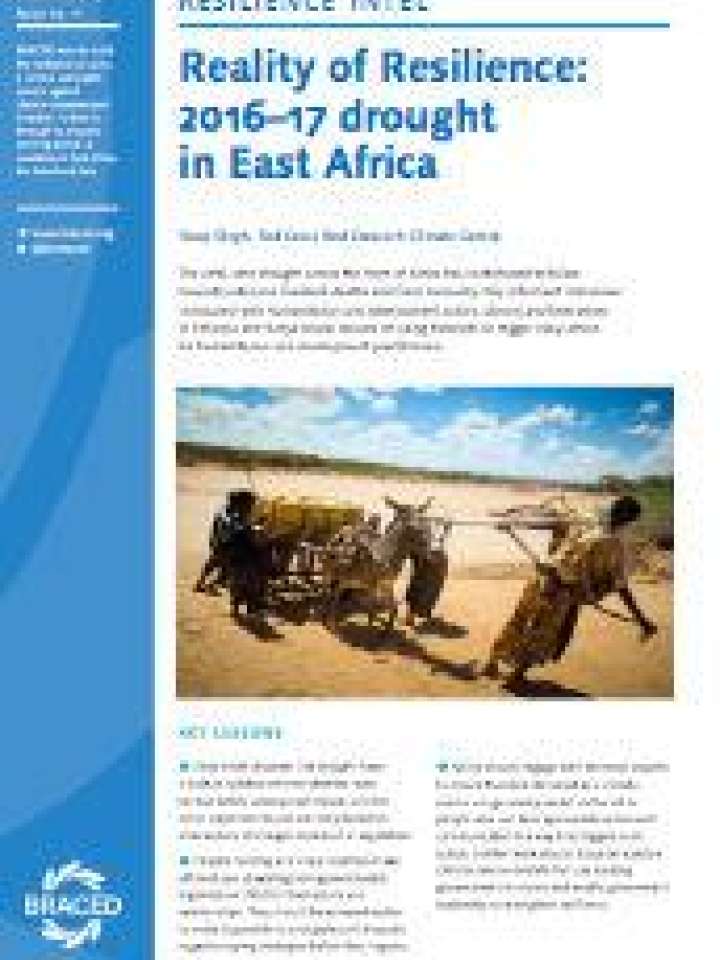Reality of resilience: 2016–17 drought in East Africa
This paper shares key lessons on the use of weather forecasting, learned from the 2016–2017 drought across the Horn of Africa that contributed to failed harvests, extensive livestock deaths and food insecurity. Key informant interviews conducted with humanitarian and development actors, donors and forecasters in Ethiopia and Kenya reveal lessons on using forecasts to trigger early action for humanitarian and development practitioners.
Key lessons
- Slow-onset disasters like drought have a built-in window of time after the rains fail but before widespread impacts are felt, when organisations can act early based on observations of changes in pasture or vegetation.
- Flexible funding and crisis modifiers make efficient use of existing non-governmental organisation (NGO) infrastructure and relationships. They should be accessed earlier to make it possible to anticipate and dissuade negative coping strategies before they happen.
- NGOs should engage with technical experts to ensure forecasts delivered as a climate service are genuinely useful, delivered to people who can take appropriate action and communicated in a way that triggers such action. Further work should focus on scalable climate service models that use existing government structures and enable government leadership to strengthen resilience.
Explore further
